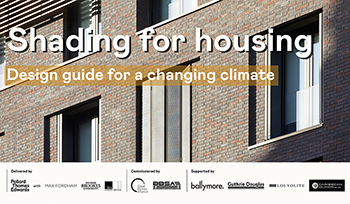Bidet
Contents |
[edit] Introduction
The Building Regulations Approved Document G: Sanitation, hot water safety and water efficiency suggests that the term ‘sanitary appliance’ means a ‘… WC, urinal, bath, shower, washbasin, sink, bidet and drinking fountain. It also includes appliances that are not connected to a water supply (e.g. composting toilet) or drain (e.g. waterless urinal).’
These appliances collect and remove water and other waste matter. They are generally grouped into two categories: soil appliances and wastewater appliances. A bidet (either pedestal or wall hung) is categorised as a soil appliance and is used for hygienic matters.
[edit] History
The word bidet comes from the French term for "little horse" - a reference to the position of a person who is using the device. It originated in 16th century France, although the specifics of its introduction are unknown.
It may have been used along with a chamber pot, both as a device for washing and a contraception aid. Until the 1900s, bidets were most often found in bedrooms, but when modern plumbing was introduced to the bathroom, bidets and chamber pots moved out of the bedroom.
[edit] Types of bidets
Bidet shower. This is also referred to as a bidet spray, bidet sprayer or health faucet. It is a separate handheld device with a trigger.
Conventional. This is a separate plumbing fixture that is generally installed near a toilet.
Add-on bidet. This is a device with a nozzle that is attached to a toilet bowl or toilet seat. It may also be referred to as a combined toilet, bidet attachment or combi toilet.
[edit] Cultural preferences
Bidets are commonly used in some parts of the world and are legally required in certain countries, including Portugal and Italy. They are also frequently found in other parts of the world, including Islamic countries, Africa, South America and Japan.
Japanese bidets sometimes include features such as seat warmers, dryers and so on, making them popular in other parts of the world (including Asia and the US). However, bidets are not commonly found in the UK or the US.
There is some debate over whether bidets are more hygienic than toilet paper alone. The sole use of a bidet can save a significant amount of paper. However, it is believed that a combination of the two provides the greatest hygienic benefit.
[edit] Related articles on Designing Buildings
Featured articles and news
Editor's broadbrush view on forms of electrical heating in context.
The pace of heating change; BSRIA market intelligence
Electric Dreams, Boiler Realities.
New President of ECA announced
Ruth Devine MBE becomes the 112th President of the Electrical Contractors Association.
New CIAT Professional Standards Competency Framework
Supercedes the 2019 Professional Standards Framework from 1 May 2025.
Difficult Sites: Architecture Against the Odds
Free exhibition at the RIBA Architecture Gallery until 31 May.
PPN 021: Payment Spot Checks in Public Sub-Contracts
Published following consultation and influence from ECA.
Designing Buildings reaches 20,000 articles
We take a look back at some of the stranger contributions.
Lessons learned from other industries.
The Buildings of the Malting Industry. Book review.
Conserving places with climate resilience in mind.
Combating burnout.
The 5 elements of seiri, seiton, seiso, seiketsu and shitsuke.
Shading for housing, a design guide
A look back at embedding a new culture of shading.
The Architectural Technology Awards
The AT Awards 2025 are open for entries!
ECA Blueprint for Electrification
The 'mosaic of interconnected challenges' and how to deliver the UK’s Transition to Clean Power.
Grenfell Tower Principal Contractor Award notice
Tower repair and maintenance contractor announced as demolition contractor.























